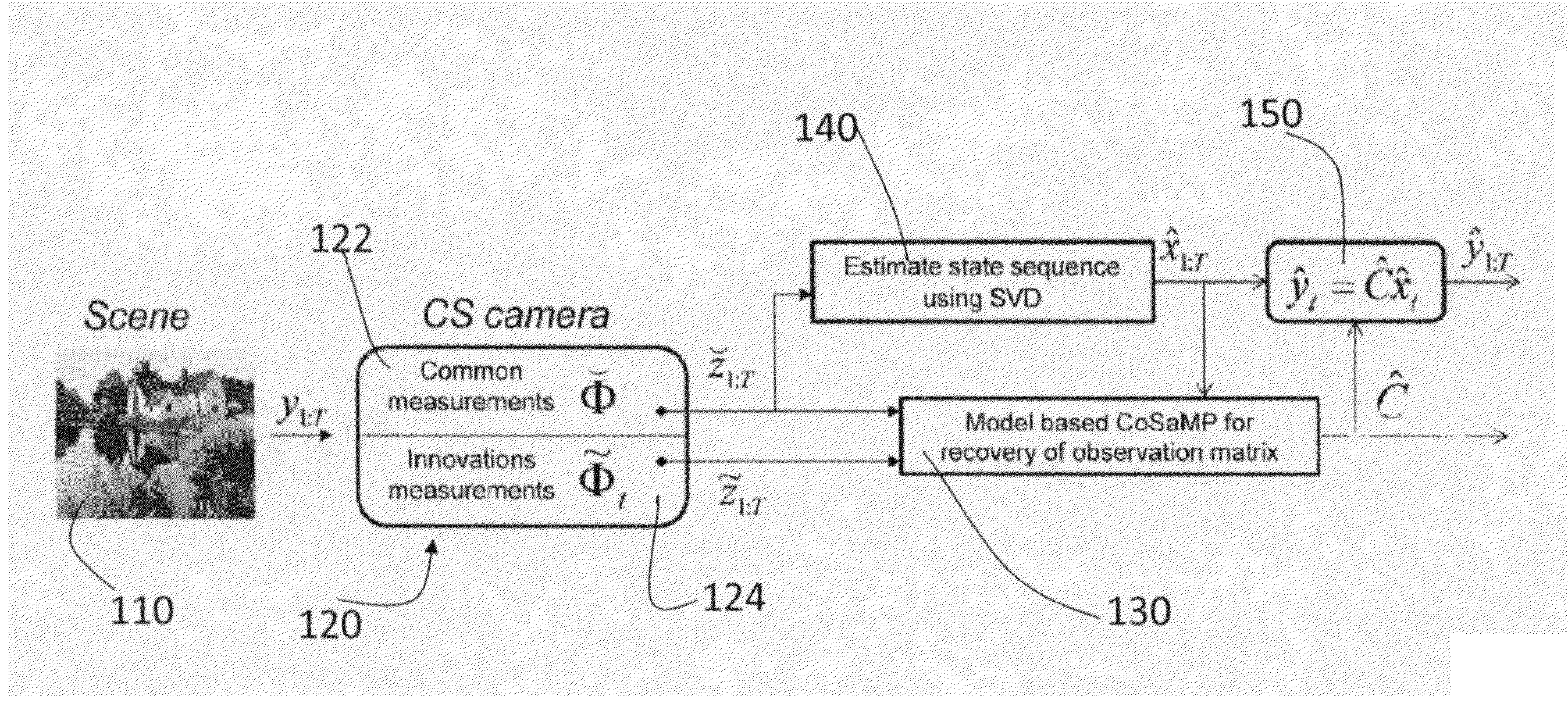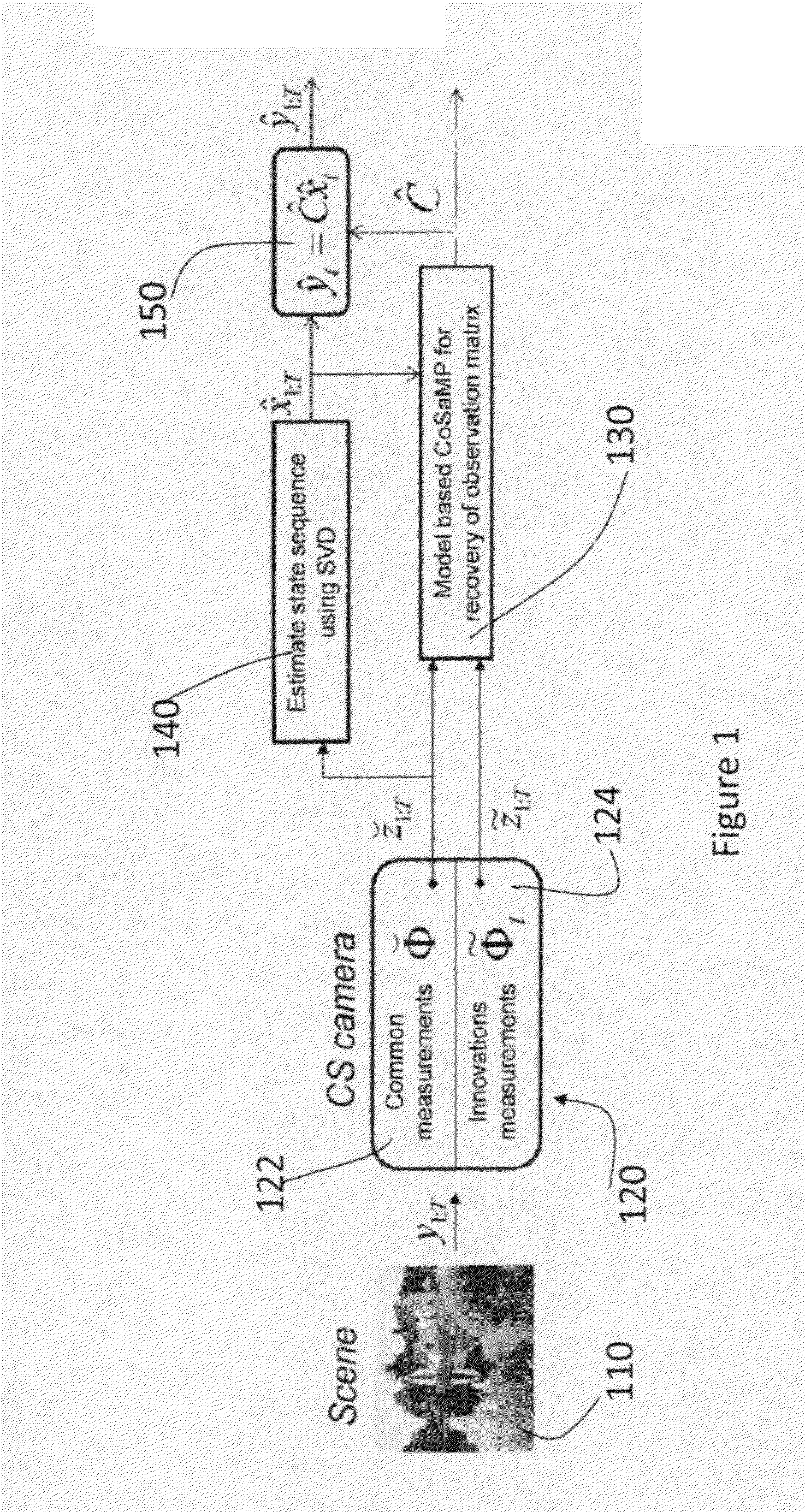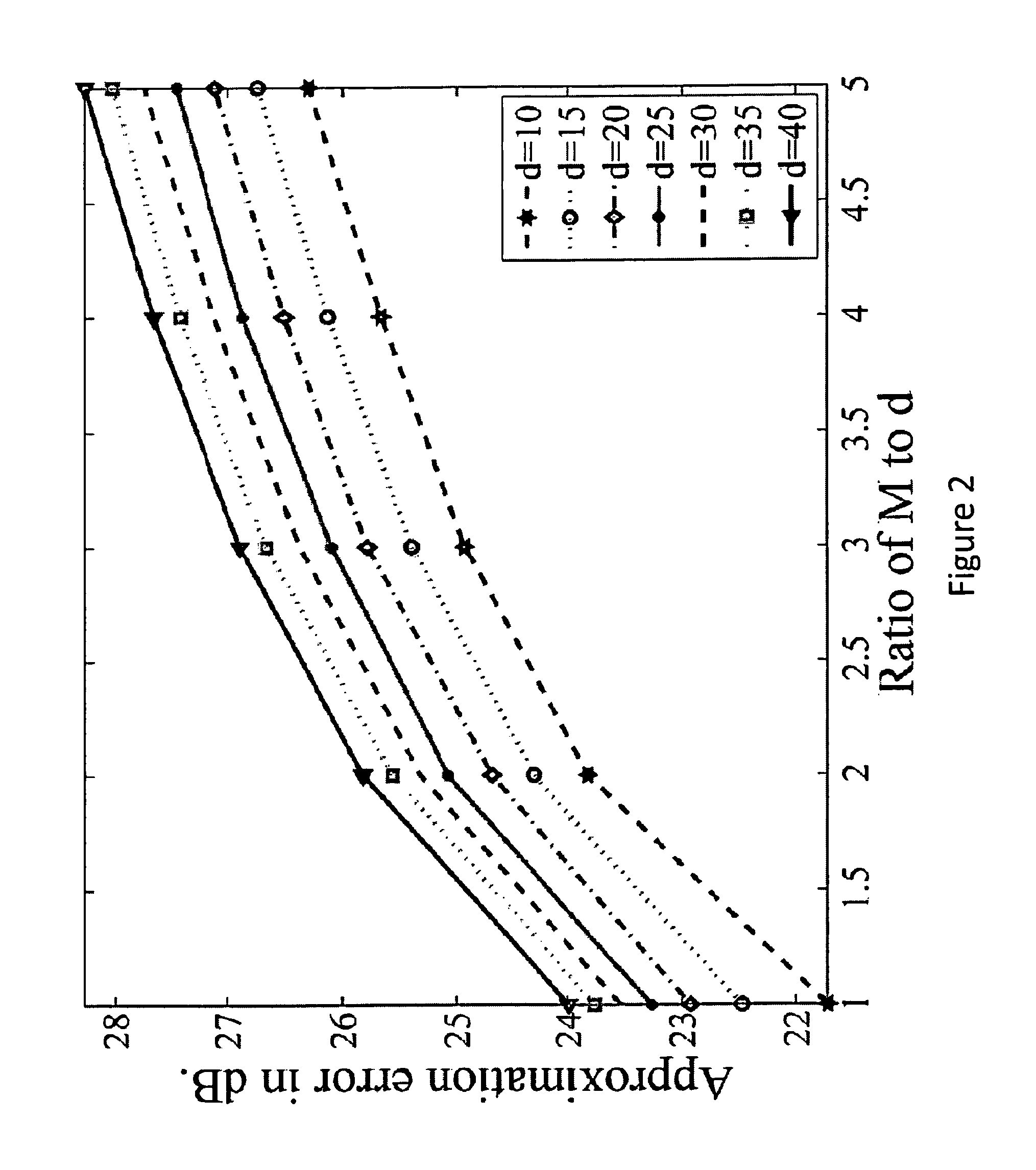Method and apparatus for compressive acquisition and recovery of dynamic imagery
a dynamic imagery and compressive acquisition technology, applied in the field of compressive acquisition and recovery of dynamic imagery, can solve the problem that the application of video sensing (defined as a sequence of images referred to as video frames) has been rather limited, and achieve the effect of reducing sensing requirements, reducing processing complexity, and efficient acquisition of correlated data sequences
- Summary
- Abstract
- Description
- Claims
- Application Information
AI Technical Summary
Benefits of technology
Problems solved by technology
Method used
Image
Examples
Embodiment Construction
[0032]The following notation is used in the present description. At time / frame t, the image observation is ytεN, the hidden state is xtεd, such that yt=Cxt, where CεN×d is the observation matrix. In this description z is used to denote compressive measurements and Φ and Ψ to denote the measurement and sparsifying matrices respectively. Further, “:” subscripts are used to denote sequences, such as x1:T={x1, x2, . . . , xT}, and the [·]1:T to denote matrices, such as [y]1:T is the N×T matrix formed by y1:T such that the k-th column is yk.
[0033]One of the key features of an LDS is that the observations yt lie in the subspace spanned by the columns of the matrix C. The subspace spanned by C also forms a static parameter of the system. Estimating C and the dynamics encoded in the state sequence, x1:T is sufficient for reconstructing the video. For most LDSs, Nd, thereby making C much higher dimensional than the state sequence {xt}. In this sense, the LDS models the video using high infor...
PUM
 Login to View More
Login to View More Abstract
Description
Claims
Application Information
 Login to View More
Login to View More - R&D
- Intellectual Property
- Life Sciences
- Materials
- Tech Scout
- Unparalleled Data Quality
- Higher Quality Content
- 60% Fewer Hallucinations
Browse by: Latest US Patents, China's latest patents, Technical Efficacy Thesaurus, Application Domain, Technology Topic, Popular Technical Reports.
© 2025 PatSnap. All rights reserved.Legal|Privacy policy|Modern Slavery Act Transparency Statement|Sitemap|About US| Contact US: help@patsnap.com



